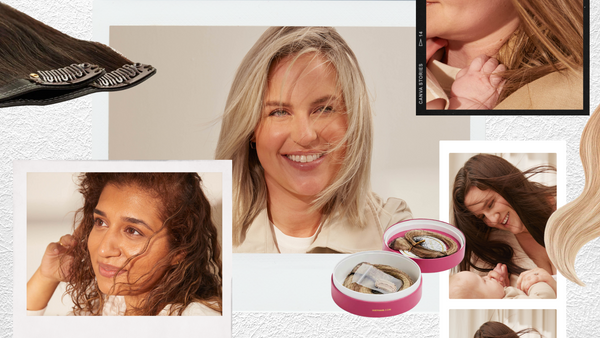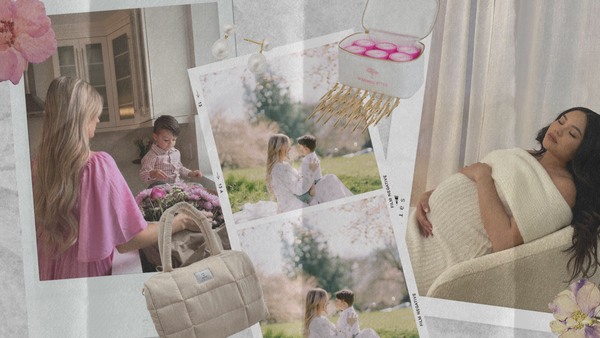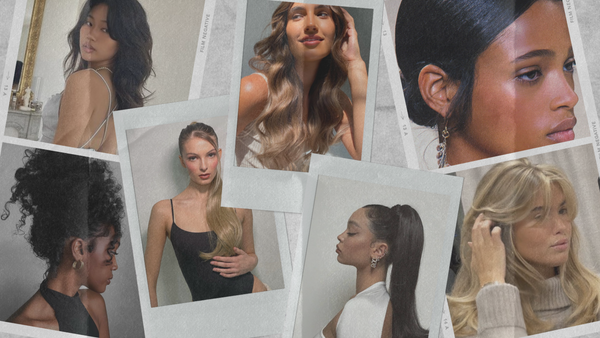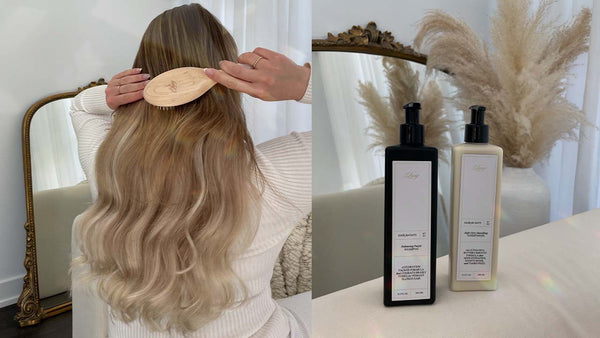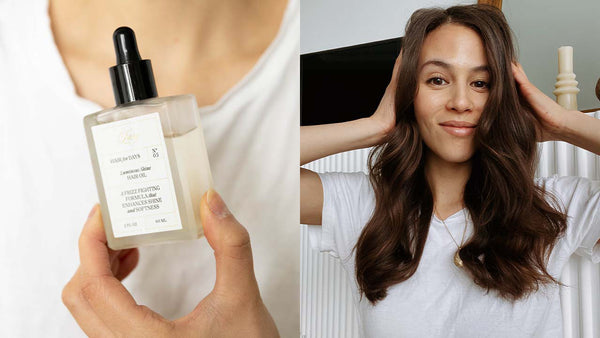The best hair secrets are ones that come from the grapevine—words of wisdom that have endured through generations.
In every country around the world, women have been sharing the hair care and styling tips they’ve learned from family and friends, using tools and ingredients that are native to their cultures. Many of these secrets have hit the mainstream over the years. Most famous is frizz-fighting Morrocon oil and the smoothing and straightening treatment from Brazil, dubbed the Brazilian Blowout.
So many countries share similar natural solutions such as nut oils, coconut oils, and other botanicals, adding their own spins or ingredients to customize treatments for the climates and environments they live in. With that being said, there are still many hair secrets from around the world to uncover and lucky for you, we’ve done our research to bring you a few more to add to your hair care repertoire.
Brazil: DIY chocolate masks and Velaterapia
Brazilians are known to have beautiful, luscious locks. There’s a reason so many of their treatments, processes, and products have been so successful internationally. One report found that Brazilian women spent approximately $7 billion on hair care in 2014 alone. From salon treatments to hair extensions, it’s no secret, Brazilians are serious about their hair.
Despite all that their culture has shared with us, there are still a few more tips to uncover. One is Velaterapia, a seriously hot treatment to remove split ends. Not only is it on fire when it comes to popularity, it literally uses a flame to burn off split ends and is also referred to as candle therapy. Commonly performed in salons across Brazil, stylists will section off the hair tightly so only the ends will stick out and then quickly run a candle flame along the ends. It’s intended to remove dead or split ends without removing much length. For obvious safety reasons, it is vital to ensure you are going to a trusted professional. While some salons offer this treatment in the U.S. and Canada, be sure to do your research and get referrals before making your appointment.
If you’re looking for a treatment for split ends or dry hair without having to light up, consider a hair mask that you can easily make at home. Smooth, frizz-free locks are the foundation of Brazilian hair care (hello, Brazilian Blowouts!) and this recipe, in particular, is sure to give you some delicious results: A DIY chocolate mask! All you need is natural cocoa, cornstarch, and water. Simply mix the ingredients together and leave in your hair for 15-30 minutes. This mask is said to help hydrate and condition your hair and will certainly smell a lot better than putting a flame to your split ends.
France: the art of air-drying and finger styling
We’ve been looking to French women for decades for tips and tricks on elegant, effortless beauty and style. While these tips may not be completely new, there’s a twist to these hair secrets that have a little je ne sais quoi. For women in France, it’s all about working with what you got, this means keeping the use of heat styling tools to a minimum. Instead of blow-drying, air dry your hair to keep its natural texture and shape. For waves and curls, many women will simply use their fingers to lightly twist or curl sections of their hair for loose, easy waves or curls. You can also lightly pin your hair up in a loose bun before getting ready to step out for that effortless wavy look. Finish off with some styling spray or serum to help hold your style.
Another tip? Don’t over brush your hair and embrace the slightly disheveled look. By removing harmful heating tools and the pulling and stress from over-styling, you give your hair a break, allowing it to become healthier and grow longer over time.
Japan: Boxwood combs and Camellia Oil
In Japanese tradition, a bride would receive a set of boxwood combs, usually customized, carved, and decorated by hand. This styling tool is not just reserved for brides, however, as many women use it as part of their hairdos (everything from a simple side part to elaborate updo’s), or to simply detangle their hair. The short-tooth comb does not cause static, while softly separating locks and promoting shine.
Another hair secret from Japan is camellia seed oil. Originally from Oshima Island in Japan, Camellia seed oil is applied like a leave-in conditioner. It is said to help the hair grow and stay strong. It can also be used on the skin for a more glowing complexion.
India: natural dye and hair oil
Hair is given immense significance in Indian culture and their hair treatments and ingredients prize natural foods and botanicals found all over the country. Women in India and the Middle East tend to lean towards more natural-looking hair colors. Henna is often used and can be combined with coffee grounds or tea leaves to create a rich espresso or dark brown hue. The ingredients are mixed together to create a paste and left in the hair to give dark hair a vibrant sheen. Removing chemicals from the dye process is always a win for the long-term growth and health of the hair. It’s no wonder Indian women are known for their long, thick locks!
For hair oils, sunflower, jasmine, and coconut oils are all widely used in India. They are used to not only hydrate and condition the hair, but also to maintain scalp health. Another ingredient that’s popping up in hair and body oils alike is Amla–an Indian gooseberry and superfood. Amla is packed with Vitamin C and E and can be mixed with sunflower and jasmine oil for the ultimate formula to help prevent breakage, promote hydration and strength of every strand.
Thailand: coconut milk
Coconut is widely-known and used in a variety of hair and beauty products for its hydrating and nourishing properties – but you’ve probably never tried it like this. In Thailand, it’s not uncommon for women to grate and squeeze fresh coconut to get the fruit’s milk. Heat the coconut milk on the stove until the oil separates, then let it cool, and apply to the hair as a shampoo. This all-natural technique allows you to enjoy the benefits of coconut from the source without any extra chemicals or ingredients – and imagine how amazing your kitchen and home will smell.
Jamaica: cactus oil
Cacti thrive in scorching, dry climates because of their ability to retain moisture so it’s no wonder it is an effective solution for hydrated, frizz-free hair. In Jamaica, cactus plants are peeled, and the oil is extracted to use as a shampoo or leave in treatment. Cactus oil not only helps with hydration and smoothness to protect against humidity, it also keeps locks shiny and its natural omega fats and B5 Vitamins also helps encourage hair growth.
Australia: UV protection and salt water
The land down under is known for its beautiful beaches, and hot, sunny weather year-round which is why UV protection is essential for Aussie women. Most people only think of skin protection when it comes to harsh UV rays, but the sun can also have a negative impact on our hair as well, as it strips the hair of natural proteins such as keratin and can also cause changes to hair color. Take a page out of the Australian women’s hair care book and look for serums and sprays that contain UV protection. Sun-protectant hair products can also help prevent and tame frizz which is common in hot weather.
As for those surf-tousled waves so often associated with Australian beauties, hair pros say locals will air dry their hair after a dip or surf in the ocean to help give the hair texture. If you’re looking to recreate beach waves but don’t have the ability to take an impromptu dip in the ocean, look for styling products that contain salt water and use your fingers to twist or curl your hair and scrunch! No hot tools needed.
Ethiopia: butter
Ethiopian model Gelila Bekele once told Allure Magazine that Ethiopia has more than 80 tribes and that it signifies something different to each tribe. Women will use what is available locally such as red clay, ghee, coconut, and even raw butter to style, dye, and treat their hair. All this diversity in one country means a ton of hair treatments and tips to learn from. The use of raw butter is interesting as it offers a ton of benefits. As a hair mask, massage the raw butter into your scalp until it melts and leave it overnight once or twice a week. This hydrates the scalp and hair and can even be used to moisturize the skin. Raw butter is also used in a mixture with red clay paste to color hair.
Colombia: avocado mash mask
It’s been said that breakfast is the most important meal of the day -- who knew it could benefit your hair the most, too? In Colombia, women use avocado and mash it up with two egg whites for a natural remedy that is full of Vitamins B and E. By leaving the mask on for about 15-20 minutes, the natural ingredients will help to smooth and tame frizziness as well as help strengthen the strands and promote hair growth. Forget toast, save your avocados for your hair instead.
Greece: Mastic and the Mediterranean diet
Mastic is a resin from the mastic tree, found on the Greek island of Chios. Sometimes referred to as Arabic or Yemen Gum, it is used in Greece to wash hair or as a hair mask. It helps promote hair growth, hydration, and shine, especially for women who live in warmer climates. The Mediterranean diet is also something to adopt for better hair and skin; Greek foods are rich in whole grains, lean fish, nuts, olives and hydrating oils – all the ingredients for a healthy look inside and out.
Everyone has a home remedy when it comes to hair and beauty, whether it’s been passed on through cultures or generations. Do you have any tips not on this list? Sound off below, we love hearing your hair secrets!


